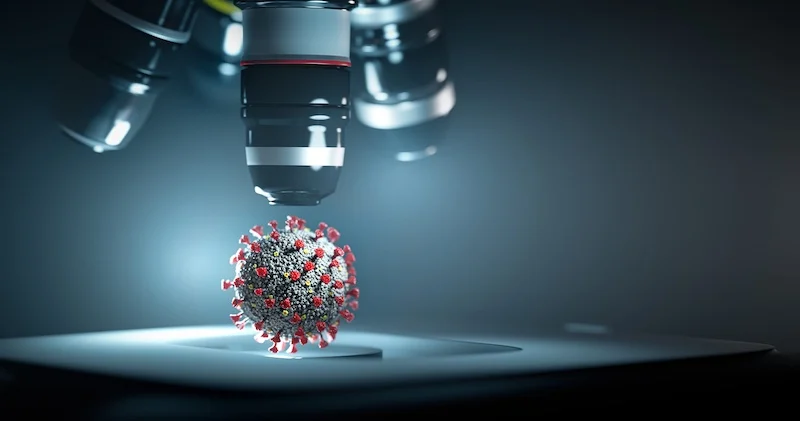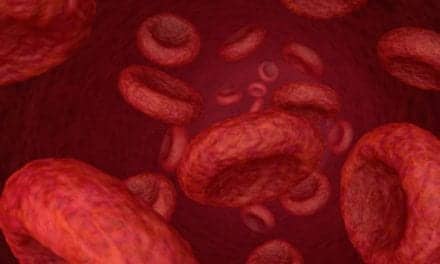The industry has learned many important lessons as it looks back at how the COVID-19 pandemic is still shaping clinical diagnostics today.
By Chris Wolski
Summary:
The COVID-19 pandemic, which began on March 15, 2020, reshaped healthcare, diagnostics, and public health preparedness, leaving lasting impacts on the industry.
Three Key Takeaways:
- Testing Evolution: The pandemic accelerated the shift to at-home and point-of-care testing, making diagnostics more accessible and patient-centric.
- Supply Chain & Workforce Challenges: The industry faced supply shortages, regulatory hurdles, and workforce strain, highlighting the need for better preparedness.
- Public-Private Collaboration: Effective pandemic response required unprecedented cooperation between labs, government agencies, and private industry, emphasizing the need for ongoing partnerships.
March 15, 2020, will likely join December 7, 1941; November 22, 1963; and September 11, 2001, as one of the unforgettable days that lives on in our national psyche. It was on this date that states began the process of lockdowns—originally touted for two weeks, but eventually lasting up to a year or more in some places—to halt the spread of the novel SARS-CoV-2 coronavirus. The COVID-19 pandemic had officially begun.
While COVID-19 has become an endemic nuisance that is off the top news search pages, there is little argument that it has left its mark. With 1.2 million US deaths since 20201, the disease still remains a threat including to those with compromised immune systems and co-morbidities such as diabetes or heart disease.
Diagnostic testing was critical during the height of the COVID-19 pandemic (2020-2022) in helping to halt disease progression—acting in concert with patient isolating and treatment. During this time more than 900 million tests were given in the US alone2.
To mark the fifth anniversary of the COVID-19 pandemic, CLP asked industry experts about the biggest surprises and lessons they learned during the pandemic, and how diagnostic testing has changed as a result. With the potential threat of other emerging infectious diseases—both old and new—the lessons learned during the COVID-19 pandemic may make us more readily prepared for the next one—when, and not if, it occurs.
COVID-19 Pandemic: Scrambling in Response
As a novel disease, COVID-19 presented the healthcare enterprise and labs, in particular, an initial challenge—there weren’t any readily off-the-shelf tests available, which slowed some of the initial response to the infection.
This lack of preparation for a national crisis of this type was one of the big surprises for the industry, according to Nathan Patton, VP marketing, Near Patient Care, Roche Diagnostics and head of Roche (COVID-19) Pandemic Response Office.
“In light of the pandemic, we saw clearly that our country was not prepared for a public health emergency. One of the most notable surprises was how the early lockdowns profoundly impacted transportation, from ships to commercial airline carriers, posing significant supply chain challenges,” he says.
Rachele Moore, DBA, MBA, MLS (ASCP)cm, executive director of Laboratory Services at Aultman Health System, saw the lack of preparation and how it caught lab managers off guard firsthand. She provided a list of ways laboratory leaders were surprised during the early days of the COVID-19 pandemic:
- Demand Surge: The overwhelming and unprecedented demand for testing caught many off-guard. Laboratories had to quickly scale up operations far beyond their anticipated capacities.
- Supply Shortages: The global supply chain was ill-prepared for the sudden demand for reagents, swabs, PPE, and other testing materials, leading to significant shortages.
- Rapid Technological Adaptation: The rapid pace of technological advancement and the need for swift validation and integration of new testing methodologies were unexpected challenges.
- Regulatory Changes: The frequent changes in guidelines and emergency use authorizations required labs to be highly adaptable and agile in implementing new protocols.
- Public Expectations: The public’s expectation for quick and reliable test results puts immense pressure on labs, highlighting the need for clear communication and managing expectations.
- Cross-Sector Collaboration: The extent and necessity of collaboration between private, government, and academic laboratories were surprising but critical for managing testing demands.
Many of the industry experts contacted by CLP for this article, noted that in the midst of these types of challenges one of the biggest surprises was the flexibility the government showed—after its initial lag in response—in developing guidelines and regulatory pathways that allowed for the streamlined development of testing.
“Most surprising was the way the community was able to come together to solve complex problems and bring forward solutions. Diagnostic labs often deal with a temporary short supply of reagents or mechanical downtime with instruments, but the sheer effort to get testing developed, online, and generating guidance for physicians was truly impressive, particularly in the absence of collection devices and challenges with the transport of specimens,” says John Osiecki, vice president Medical Affairs, North America for bioMérieux. “Partnerships between clinical labs, public health, government, and community leaders evolved rapidly and recognize cultivating these crucial relationships is just as important now as they were during a challenging pandemic.”
That being said, Moore, who is also a member of CLP’s editorial advisory board, adds that she and other laboratory leaders wished they would have known at the outset included the extent of the pandemic—which would have aided resource planning and developing long-term strategies—weaknesses to the supply chain, the importance of a robust IT infrastructure, and the critical importance of ongoing, transparent communication with the public and stakeholders.
“These insights provide valuable lessons for future pandemic preparedness and response strategies,” she adds.
Echoing Moore, Osiecki notes: “Looking back, we did not know the extent of the challenges that were ahead. Now, we have a better understanding of such challenges and the extent of flexibility that will be required in the future.”
The Shift from Lab to Home
As with the Spanish flu a century ago, the COVID-19 pandemic has created seismic shifts in American culture: working from home, the ubiquity of home delivery of food and products, the rise of streaming entertainment. These have changed how we live.
But perhaps the biggest direct change has been how patients in increasing numbers are experiencing testing. The early days of the COVID-19 pandemic brought long lines and long waits for results. But thanks to industry innovations and the flexibility of healthcare regulators, at-home testing quickly became a way of health for many Americans. And with this proverbial “genie” out the bottle, the public both has the expectation of and comfort with at-home testing—a menu that is expanding every day. And it’s clear that this appetite is not going to change.
“We are seeing much more acceptance of self-collection and home testing, brought on by the necessity for rapid POC testing during the COVID shutdown. The recent FDA approval of Roche’s vaginal HPV self-collection devices and BD’s vaginal self-collection devices for HPV and vaginitis are prime examples of this shift toward patient-centric testing,” says Ronald A. Blum, PhD, vice president of Science & Technology at OmniPathology. “The emergence of more direct-to-consumer (DTC) testing options with self-collection is growing, and consumers are much more comfortable visiting various healthcare settings to receive their care, including pharmacies, telemedicine, the wearing of remote monitoring devices, mobile phlebotomy, and home visits.”
At-home and point-of-care testing (POCT) were critical transformations for the industry, according to Mike Nassif, head of Point of Care Diagnostics for Siemens Healthineers.
“Quality point-of-care devices have been instrumental in concretely demonstrating the value of decentralized care, making testing faster and more accessible by bringing it closer to patients,” he says. “The pandemic pressure tested POCT’s capabilities to effectively support care outside traditional hospital settings. Five years out, and it’s safe to say that decentralized care—not only in the form of diagnostic testing but also in regard to how healthcare is delivered in general—is here to stay, and continuing to accelerate. POCT is no longer a trend. Rather, POCT has become a key pillar of diagnostic testing that has demonstrated it is equally as valuable as other specialty testing verticals. Clinics, pharmacies, and even patients’ homes are now critical points of care delivery.”
How Has the COVID-19 Pandemic Changed the Industry?
It’s not just the extend of at-home testing that has evolved and changed as a result of the COVID-19 pandemic, it’s the industry itself. Perhaps a more fundamental change is the effect of having a higher profile on public perception—which is clearly a two-edged sword.
“The pandemic has educated the public about the role of diagnostics in managing health and preventing disease spread,” says Moore. “Increased trust in testing has led to higher demand for routine and preventive testing.”
Jennifer Schneiders, PhD, president, Diagnostic Solutions for Hologic, echoes Moore’s observation.
“On the positive side, COVID-19 propelled molecular diagnostics into the spotlight, boosting public awareness and driving significant technological innovation,” she says. “However, the high demand revealed vulnerabilities in labs and the greater diagnostics industry, including workforce safety and burnout and a heavy reliance on global supply chains.”
The increased public perception of clinical diagnostics has certainly been a silver lining. But it has also exposed ongoing challenges the industry was already coping with—adding additional pressure.
“With an aging population, an increase in chronic diseases and delays in care due to the pandemic, the demand for diagnostic testing is on the rise. However, the current workforce is not growing at a pace that can keep up with this demand. Furthermore, there is a shortage of skilled professionals, particularly in specialized areas of laboratory medicine. So, one of the biggest challenges facing the laboratory industry will be staffing and a skilled workforce pipeline,” notes Elizabeth Marlowe, PhD, executive scientific director at Quest Diagnostics. “There needs to be investments in public health and clinical laboratory professionals at the national level to guarantee the next generation of laboratorians are trained with the appropriate skill set and to ensure a pipeline of qualified staff to meet the growing demand for laboratory testing. It will require a coordinated effort between government agencies, educational institutions, employers, and professional organizations. Many of us are working to support these efforts, but it will take time.”
The adoption of automation and other technologies is one way the industry is coping with the increased demand.
“The laboratory industry is rapidly adopting new technologies, such as automation, NGS, AI and machine learning,” adds Marlowe. “Laboratories need to invest in these technologies to remain competitive.”
The Evolving Regulatory Landscape
If there is a single moving target for the industry it is regulation. As it stands now, the industry is facing more strict regulations surrounding laboratory-developed tests (LDTs), but with the current administration’s less regulatory approach on industry in general, there is a possibility that the LDT regulations approved in 2024 may be rolled back.
Here industry needs to be flexible and be prepared for a future with a stricter regulatory framework.
“We are at an important juncture that can greatly affect our ability to respond to a new emerging threat,” says Blum, who is a member of CLP’s editorial advisory board. “During COVID, labs were adept at developing, validating, and implementing LDTs—with the new FDA LDT rule, labs are becoming much more restricted in how they respond and, in many cases, if they will be able to effectively respond to novel emerging infections. Many labs have begun migrating away from developing LDTs, and if the FDA rule continues, many labs may lose the wherewithal—expertise and resources—they once had to develop innovative tests.”
COVID-19 Pandemic: Lessons Learned
While there were significant challenges at the dawn of the COVID-19 pandemic, the clinical diagnostics industry met them with a plethora of at-home and in-clinic tests that helped the country move to the endemic phase of SARS-CoV-2’s progression.
Along the way there have been specific lessons learned.
“The SARS-CoV-2 response taught us to think more broadly,” says Marlowe. “It taught us about testing at scale, leveraging alternative delivery strategies, including at-home collection and/or testing, and so much more. We learned that we can accelerate innovation when needed, and to utilize real-time population data to guide clinical and public health decisions and readiness for what is next. One of the greatest lessons learned is that, during a pandemic, neither public health nor the private sector can address it alone. Partnership with public health and government organizations is absolutely crucial.”
Patton highlights the need for looking at the big picture when providing critical clinical diagnostic services.
“The widespread lockdowns early in the pandemic complicated access to laboratories, posing significant challenges for technicians to install and maintain diagnostic equipment. This underscored the importance of having flexible and resilient logistical strategies and partners in place,” he says. “It became clear that it is not only essential to carefully consider the products and equipment being purchased, but also to ensure that partnerships are formed with reliable and resilient companies. This holistic approach to supply chain management is vital to effectively navigate and mitigate future disruptions.”
For Osiecki, knowing what to expect if and when the next pandemic or outbreak occurs has been one of the biggest lessons he has taken away from the experience of the pandemic.
“Looking back, we did not know the extent of the challenges that were ahead. Now, we have a better understanding of such challenges and the extent of flexibility that will be required in the future,” he says.
For Blum, the pandemic provided a means to demonstrate all of clinical labs’ virtues.
“I think the biggest lesson learned from the pandemic is the incredible ability we have as an industry to rapidly address critical problems, develop real solutions, and implement them quickly,” he says. “The resourcefulness of small independent labs to be nimble and creative in their approach was amazing. It was because of the independent labs and their expertise in test development, validation, and analysis, that we were able to [implement] accurate and reproducible COVID testing so quickly and on such a massive scale.”
And Schneiders sees the COVID-19 pandemic as providing a lesson for society as a whole.
“The COVID-19 pandemic highlighted just how vital laboratories are to our healthcare system,” she says. “Their ability to adapt, innovate and scale, while the whole world was watching, was no easy feat. Having scalable systems, robust supply chains and multidisciplinary collaboration emerged as essential pillars for navigating health crises. Most importantly, the pandemic reinforced a key lesson: Timely and accurate diagnostics are foundational to both individual patient outcomes and effective public health monitoring and decision-making.”
It is clear that five years on, we are still feeling the aftereffects of that March day in 2020, and it will likely inform the industry for at least five years or even more to come.
Chris Wolski is chief editor of CLP.
References
- “COVID Data Tracker.” Centers for Disease Control and Prevention. March 17, 2025. https://covid.cdc.gov/covid-data-tracker/#maps_deaths-total
- “Data Page: Total COVID-19 tests”, part of the following publication: Edouard Mathieu, Hannah Ritchie, Lucas Rodés-Guirao, Cameron Appel, Daniel Gavrilov, Charlie Giattino, Joe Hasell, Bobbie Macdonald, Saloni Dattani, Diana Beltekian, Esteban Ortiz-Ospina and Max Roser (2020) – “COVID-19 Pandemic”. Data adapted from Official data collated by Our World in Data. Retrieved from https://ourworldindata.org/grapher/full-list-total-tests-for-covid-19





